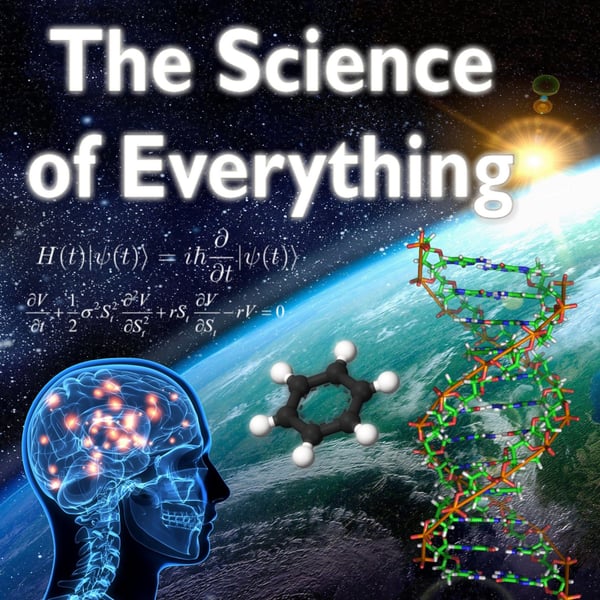Episode 145: Relativity and Black Holes
The Science of Everything Podcast
James Fodor
4.8 • 750 Ratings
🗓️ 30 June 2024
⏱️ 86 minutes
🧾️ Download transcript
Summary
Transcript
Click on a timestamp to play from that location
| 0:00.0 | Oh, wow, oh, oh, wow, oh, wow, oh, wow. |
| 0:13.0 | Oh, wow. |
| 0:15.0 | Oh, my. Hello, you're listening to The Science of Everything podcast, episode 145, Relativity and Black |
| 0:39.4 | Holes. |
| 0:40.3 | I'm your host, James Fodor. |
| 0:42.5 | This episode is a continuation of the discussion of general relativity, which we began in |
| 0:48.2 | episode 136, which is the prerequisite for this episode. |
| 0:52.9 | In that episode, we talked about general relativity and |
| 0:57.2 | explained the notion of space time and how we describe velocity, distance and curvature of space |
| 1:04.2 | time using mathematical formalisms and how we combine these formalisms together to yield Einstein's field equations, which loosely |
| 1:14.0 | say that the curvature of space-time is proportional to the energy and matter content of |
| 1:21.1 | space-time. |
| 1:22.3 | And I explained how Einstein's field equations are a series of 10 coupled nonlinear partial differential equations, |
| 1:31.4 | which means that they're very complex and difficult to solve for any realistic cases. |
| 1:36.6 | However, I did say that there are some closed form, meaning sort of simply mathematically |
| 1:42.4 | describable solutions known to Einstein's field equations, |
| 1:46.9 | and I'd talk about them in a future episode. Well, now is that future episode, or at least one of |
| 1:52.0 | those future episodes, where we'll talk about solutions to Einstein's field equations. And in |
| 1:57.4 | particular, in this episode, we're going to focus on the Schwartzschild metric and how |
| 2:01.8 | it's able to describe or predict and describe the existence of black holes. So we'll talk about |
| 2:07.1 | deriving the Schwarzschild metric, how to interpret the resulting metric, and then we'll see |
| 2:13.4 | how the resulting metric yields predictions, which have been experimentally verified and thereby |
... |
Please login to see the full transcript.
Disclaimer: The podcast and artwork embedded on this page are from James Fodor, and are the property of its owner and not affiliated with or endorsed by Tapesearch.
Generated transcripts are the property of James Fodor and are distributed freely under the Fair Use doctrine. Transcripts generated by Tapesearch are not guaranteed to be accurate.
Copyright © Tapesearch 2025.

